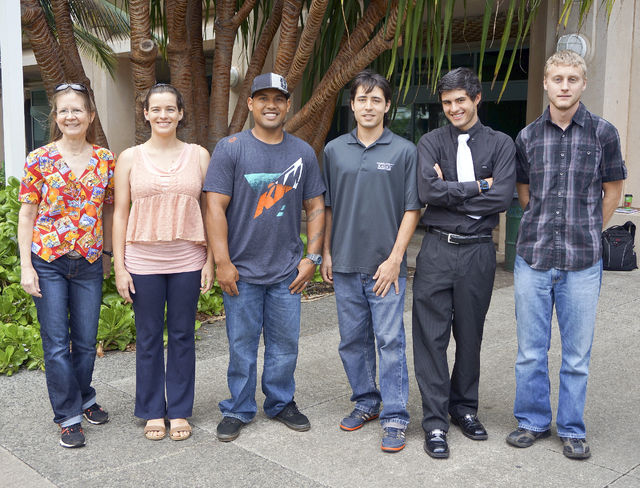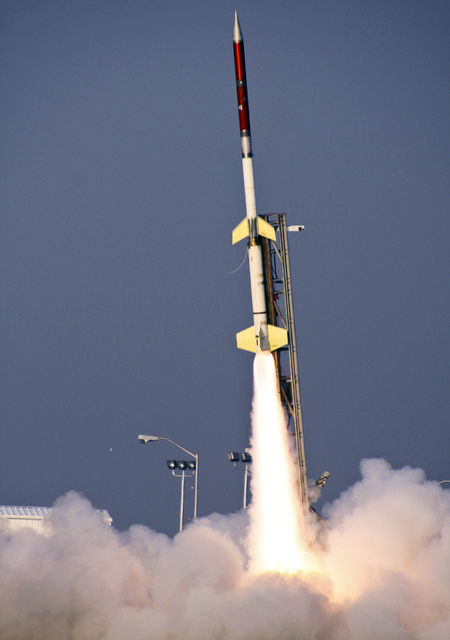PUHI — A scientific instrument designed by Kauai Community College students and faculty will blast off on the back of a rocket this summer for a journey around the sun. KCC is one of four University of Hawaii Community Colleges
PUHI — A scientific instrument designed by Kauai Community College students and faculty will blast off on the back of a rocket this summer for a journey around the sun.
KCC is one of four University of Hawaii Community Colleges to be awarded a payload aboard a suborbital flight by the RockSat-X system. The launch is scheduled for Aug. 11 at NASA’s Wallops Flight Facility in Virginia.
“The students should be proud of their accomplishments as it speaks volumes that they competed with universities for a place on the rocket,” said Georgeanne Purvinis, a KCC faculty and mentor on the project.
KCC students will join teams from Honolulu, Kapiolani and Windward community colleges in developing and testing a scientific instrument. The schools are the only community college whose payload was selected for this launch, according to a University of Hawaii press release.
The remaining seven payloads were awarded to Virginia Tech, Nebraska-Lincoln, Capitol Technology, NW Nazarene and Puerto Rico universities.
“We were awarded space on the rocket because our design was technically detailed, achievable and scientifically worthy.” Purvinis said.
The multi-campus collaboration, known as Project Imua — Hawaiian for “to move forward” — involves a joint faculty-student enterprise for designing, fabricating and testing payloads. Future launches are envisioned at the Pacific Missile Range Facility at Mana through the University of Hawaii at Manoa Space Flight Laboratory.
A team of nine students and three mentors from the four community colleges will travel to Wallops for final rocket assembly, test and launch. Among them are Kauai’s Marcus Yamaguchi, Nicholas Herrmann, Brennen Sprenger, Amber Mokelkea, and mentors Purvinis and Stu Burley.
Yamaguchi is the lead student and software designer, Purvinis said. Sprenger is responsible for mechanical design, Herrmann handles circuit design and fabrication and Mokelkea is responsible for scientific data analysis.
“Brennen, only 16 years old when he started, is doing all of the mechanical design for the UHCC campuses in the project,” Purvinis said. Each of the Project Imua campuses brings expertise and skills to the table. The Kauai CC team is responsible for designing and building the payload’s instrumentation. It worked with the Windward CC team to design and construct the payload’s mechanical housing.
The scientific instrument will include an ultraviolet spectrometer to analyze the intensity of the sun’s UV radiation before it enters Earth’s atmosphere. This study of radiation variations is significant because the changes in UV output directly affects Earth’s upper atmosphere and ultimately has consequences on Earth’s climate.
“Faculty in Kauai Community College’s Engineering and Technology Program deliver a four-year level learning experience,” said KCC Chancellor Helen Cox. “The achievement in Project Imua, attained by students who have grown up on Kauai and found their niche here is testimony to what they have learned and applied. We are extraordinarily proud and in awe of our students.”
Upon completion of its successful suborbital flight, portions of the UHCC payload will be re-fitted for the orbital launch from PMRF at Mana in early 2016. KCC has been named as the satellite tracking ground station for this orbital mission.
Project Imua is funded by a two-year $500,000 grant awarded under the NASA Space Grant Competitive Opportunity for Partnerships with Community Colleges and Technical Schools.



